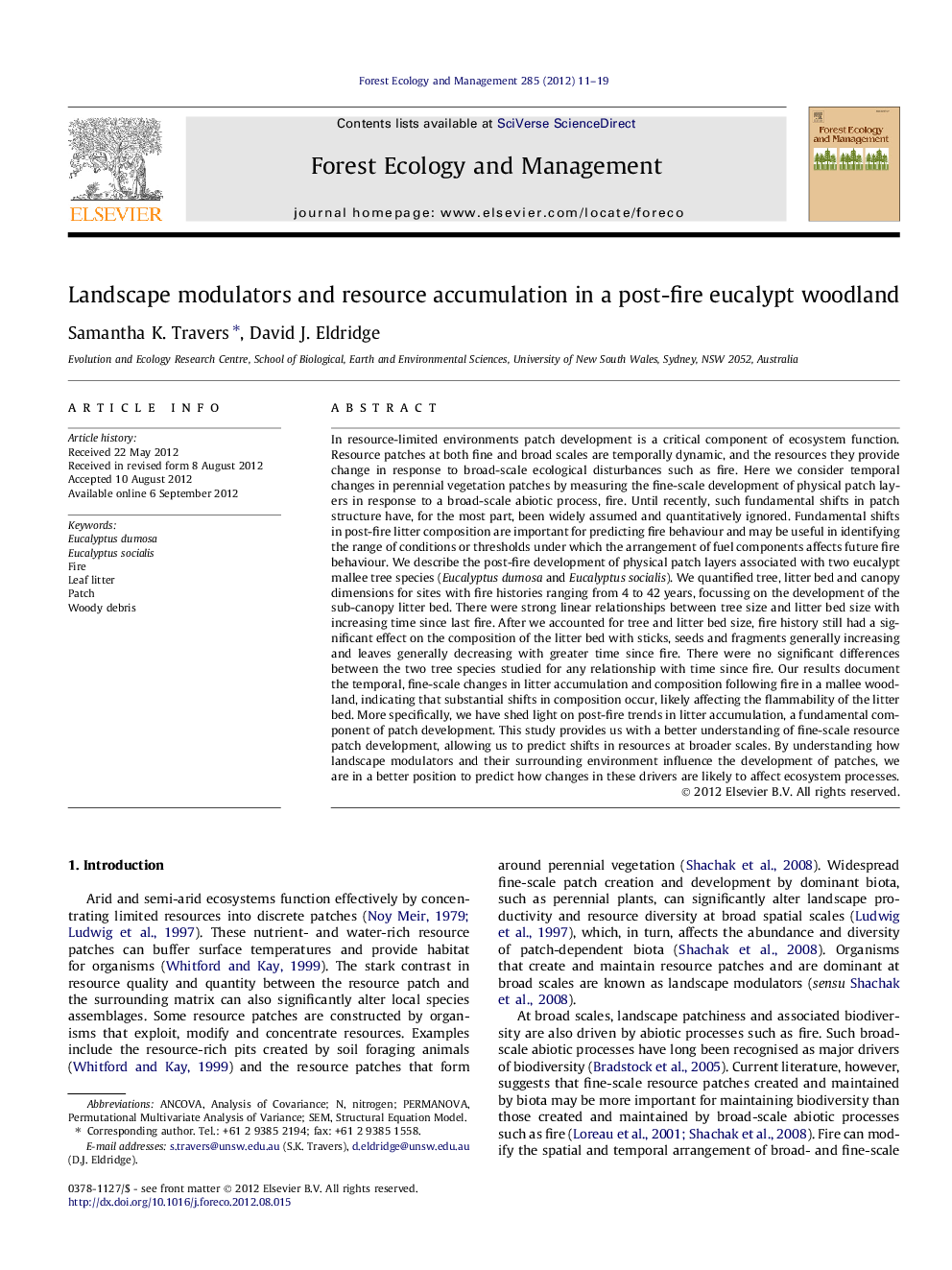| کد مقاله | کد نشریه | سال انتشار | مقاله انگلیسی | نسخه تمام متن |
|---|---|---|---|---|
| 87190 | 159237 | 2012 | 9 صفحه PDF | دانلود رایگان |

In resource-limited environments patch development is a critical component of ecosystem function. Resource patches at both fine and broad scales are temporally dynamic, and the resources they provide change in response to broad-scale ecological disturbances such as fire. Here we consider temporal changes in perennial vegetation patches by measuring the fine-scale development of physical patch layers in response to a broad-scale abiotic process, fire. Until recently, such fundamental shifts in patch structure have, for the most part, been widely assumed and quantitatively ignored. Fundamental shifts in post-fire litter composition are important for predicting fire behaviour and may be useful in identifying the range of conditions or thresholds under which the arrangement of fuel components affects future fire behaviour. We describe the post-fire development of physical patch layers associated with two eucalypt mallee tree species (Eucalyptus dumosa and Eucalyptus socialis). We quantified tree, litter bed and canopy dimensions for sites with fire histories ranging from 4 to 42 years, focussing on the development of the sub-canopy litter bed. There were strong linear relationships between tree size and litter bed size with increasing time since last fire. After we accounted for tree and litter bed size, fire history still had a significant effect on the composition of the litter bed with sticks, seeds and fragments generally increasing and leaves generally decreasing with greater time since fire. There were no significant differences between the two tree species studied for any relationship with time since fire. Our results document the temporal, fine-scale changes in litter accumulation and composition following fire in a mallee woodland, indicating that substantial shifts in composition occur, likely affecting the flammability of the litter bed. More specifically, we have shed light on post-fire trends in litter accumulation, a fundamental component of patch development. This study provides us with a better understanding of fine-scale resource patch development, allowing us to predict shifts in resources at broader scales. By understanding how landscape modulators and their surrounding environment influence the development of patches, we are in a better position to predict how changes in these drivers are likely to affect ecosystem processes.
► Shifts in post-fire litter bed composition have been quantitatively ignored.
► Litter bed dimensions increase proportionally to tree size.
► Fire history has a significant effect on litter bed composition.
► Fire history did not affect litter bed bulk density despite composition shifts.
► Compositional shifts in the litter bed may alter flammability properties.
Journal: Forest Ecology and Management - Volume 285, 1 December 2012, Pages 11–19